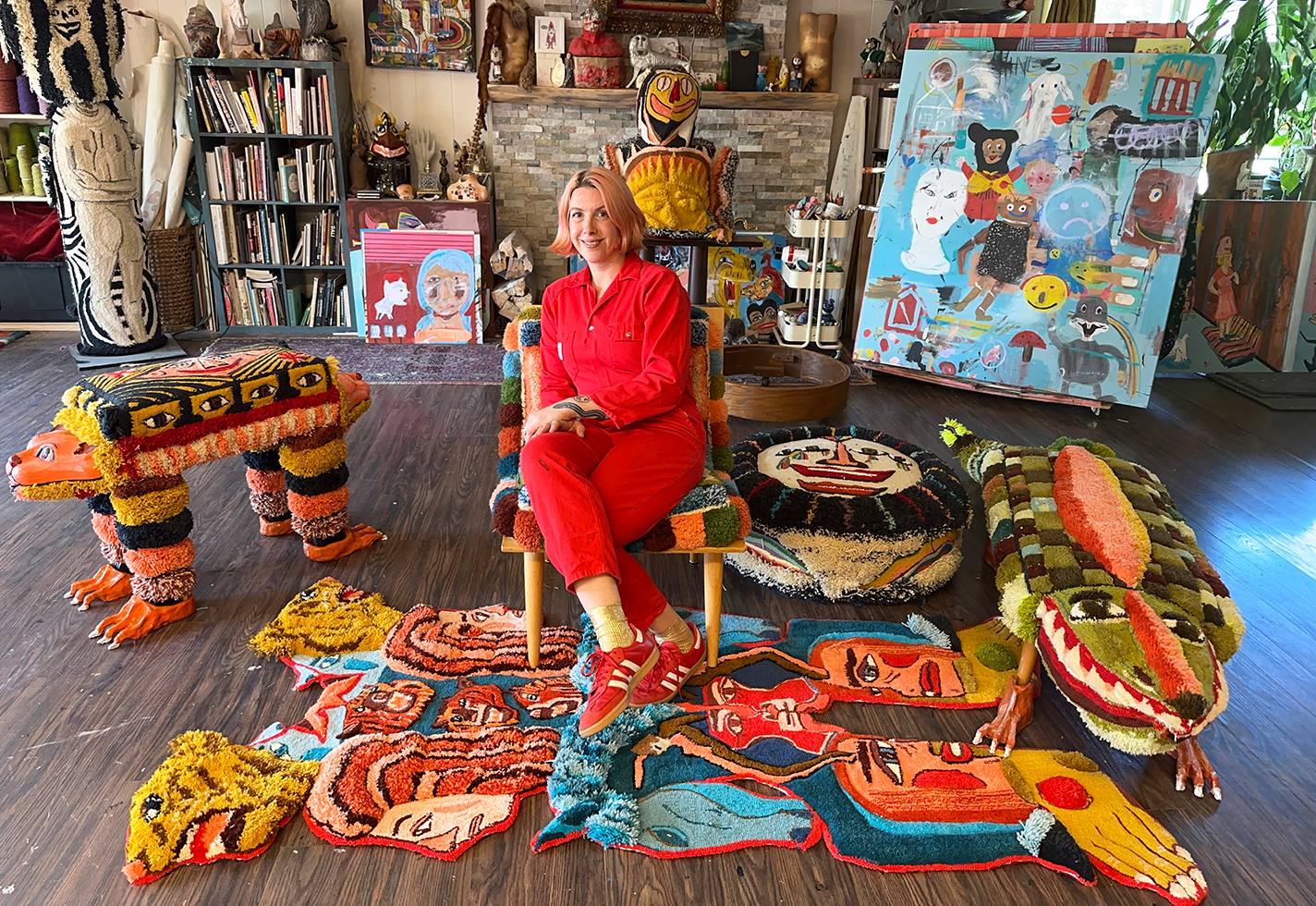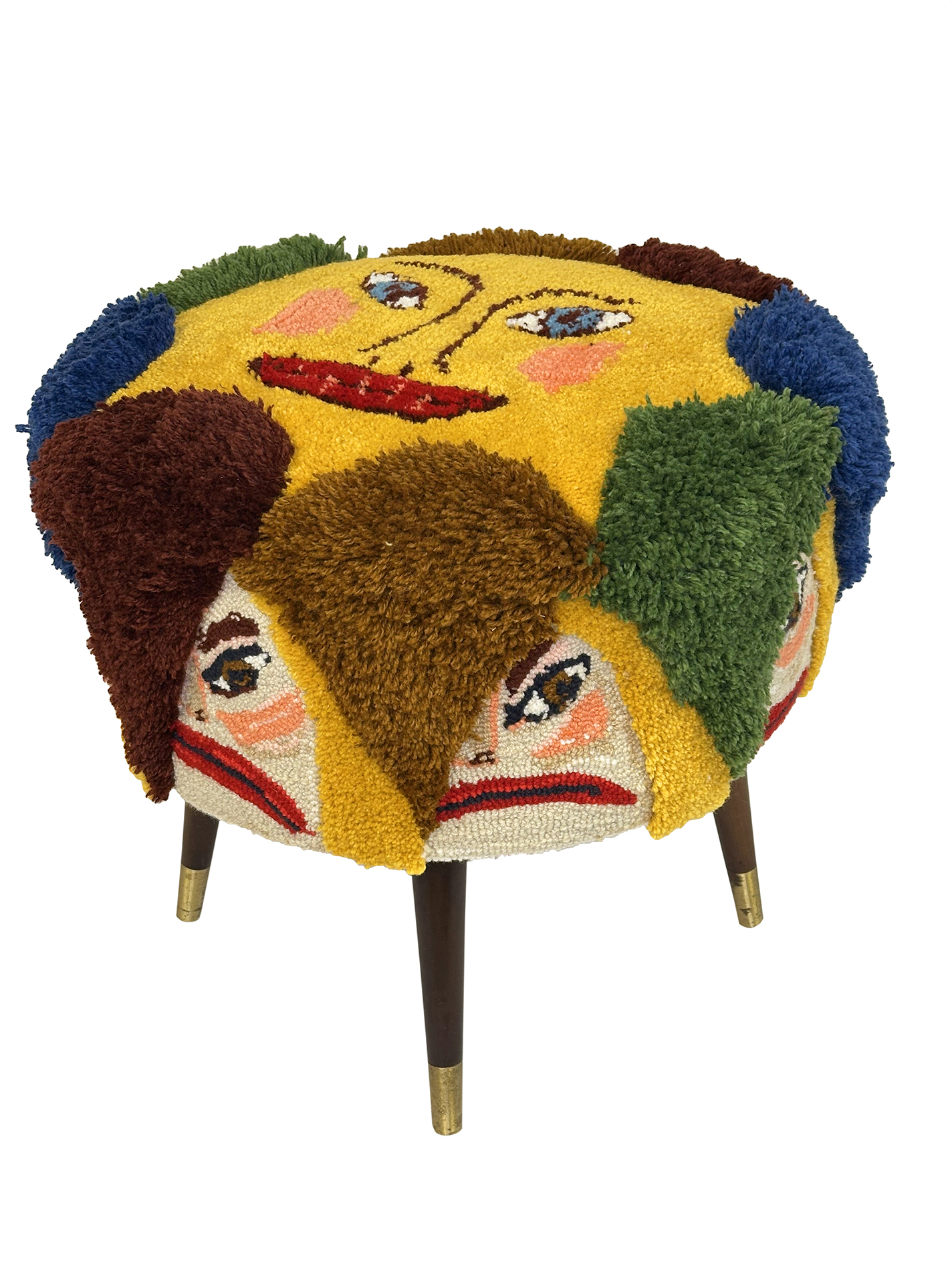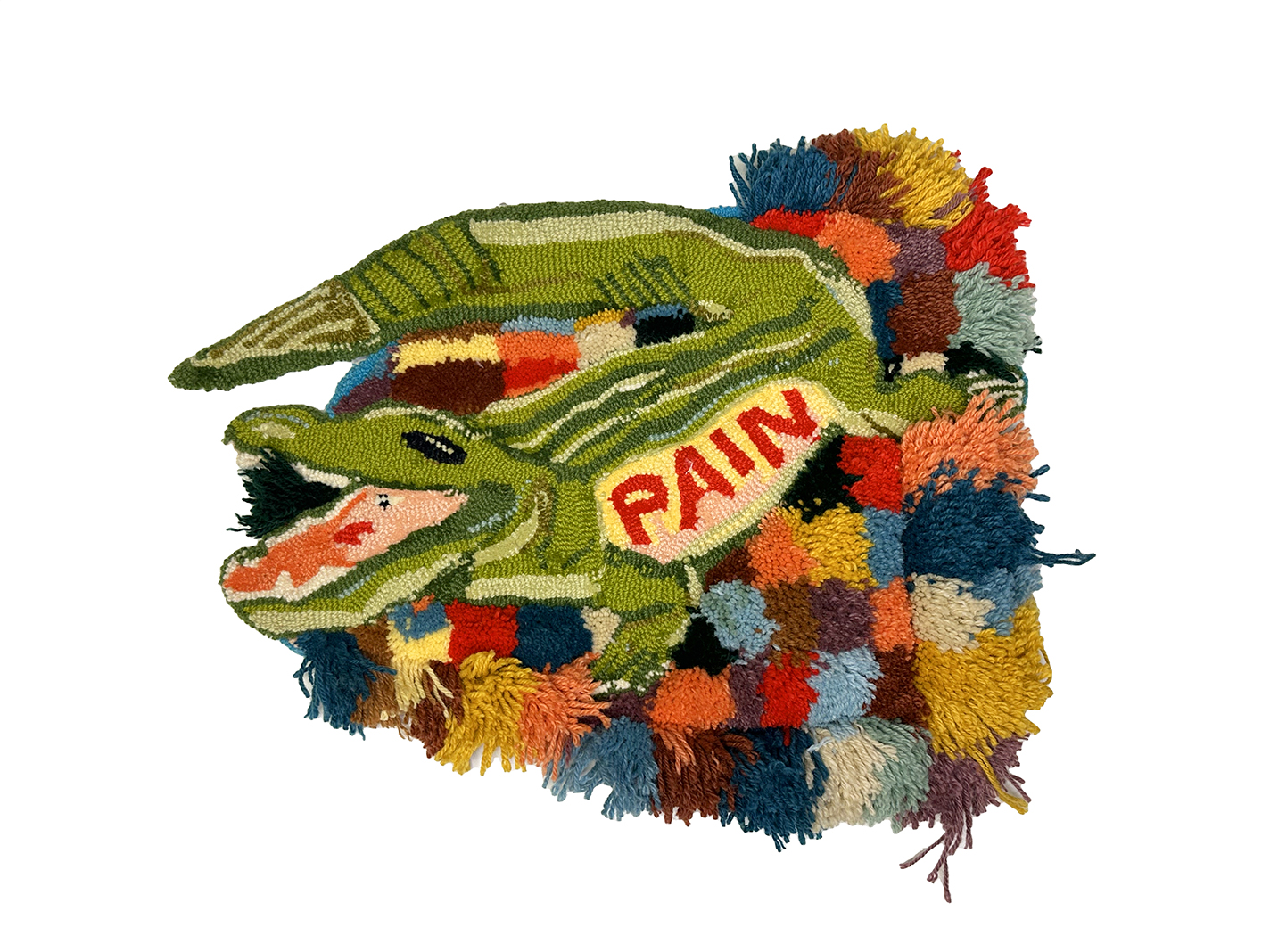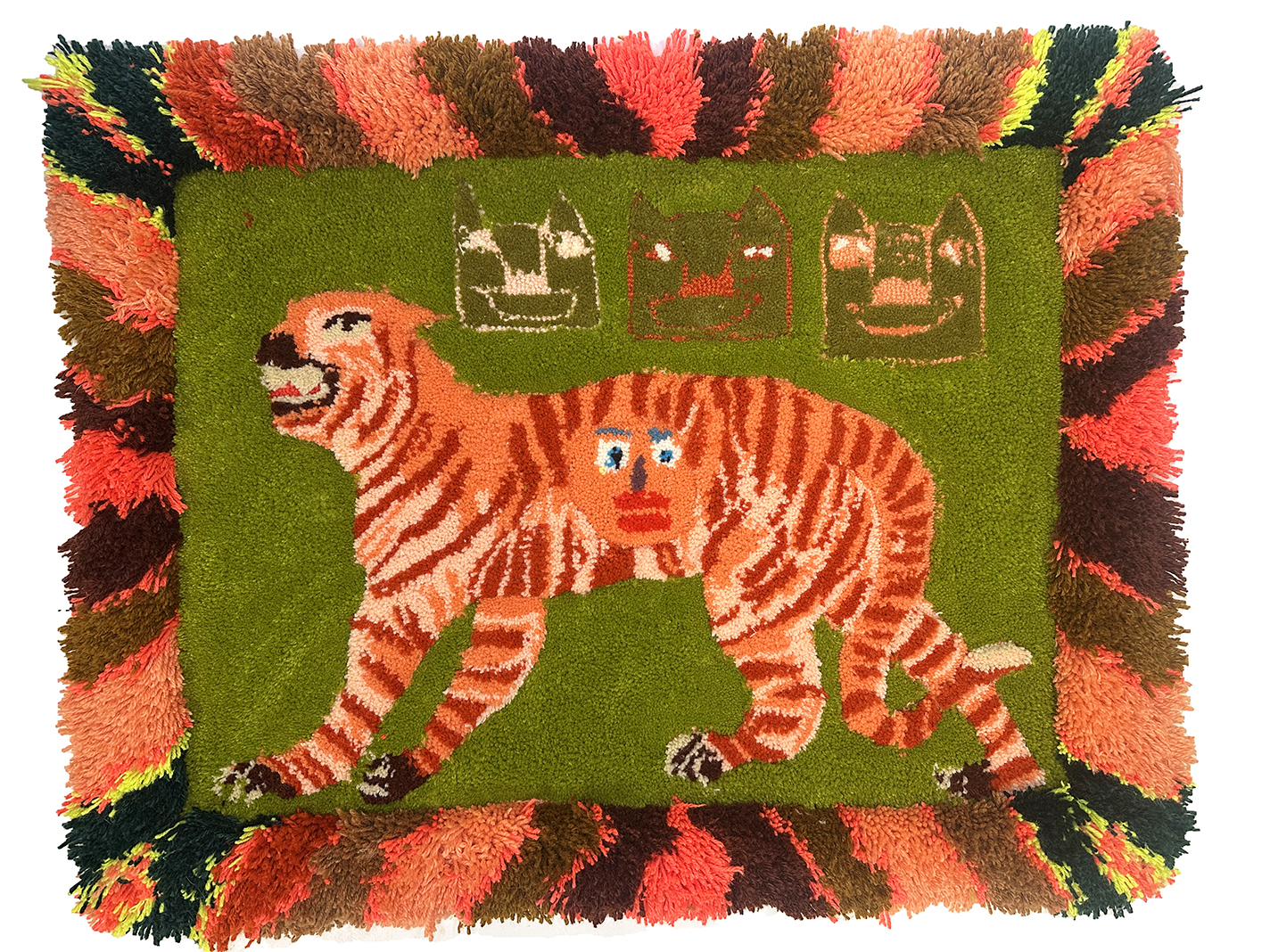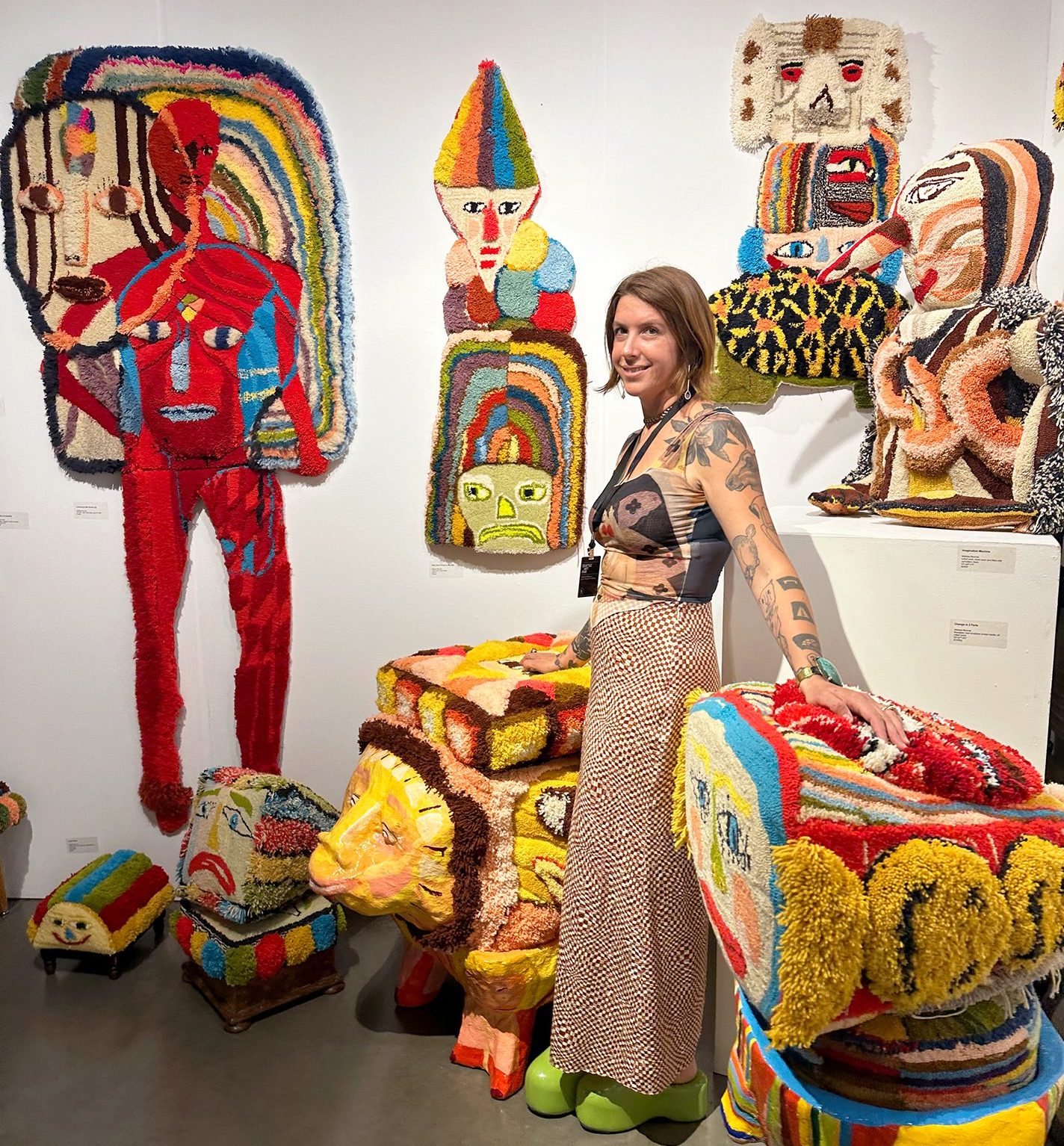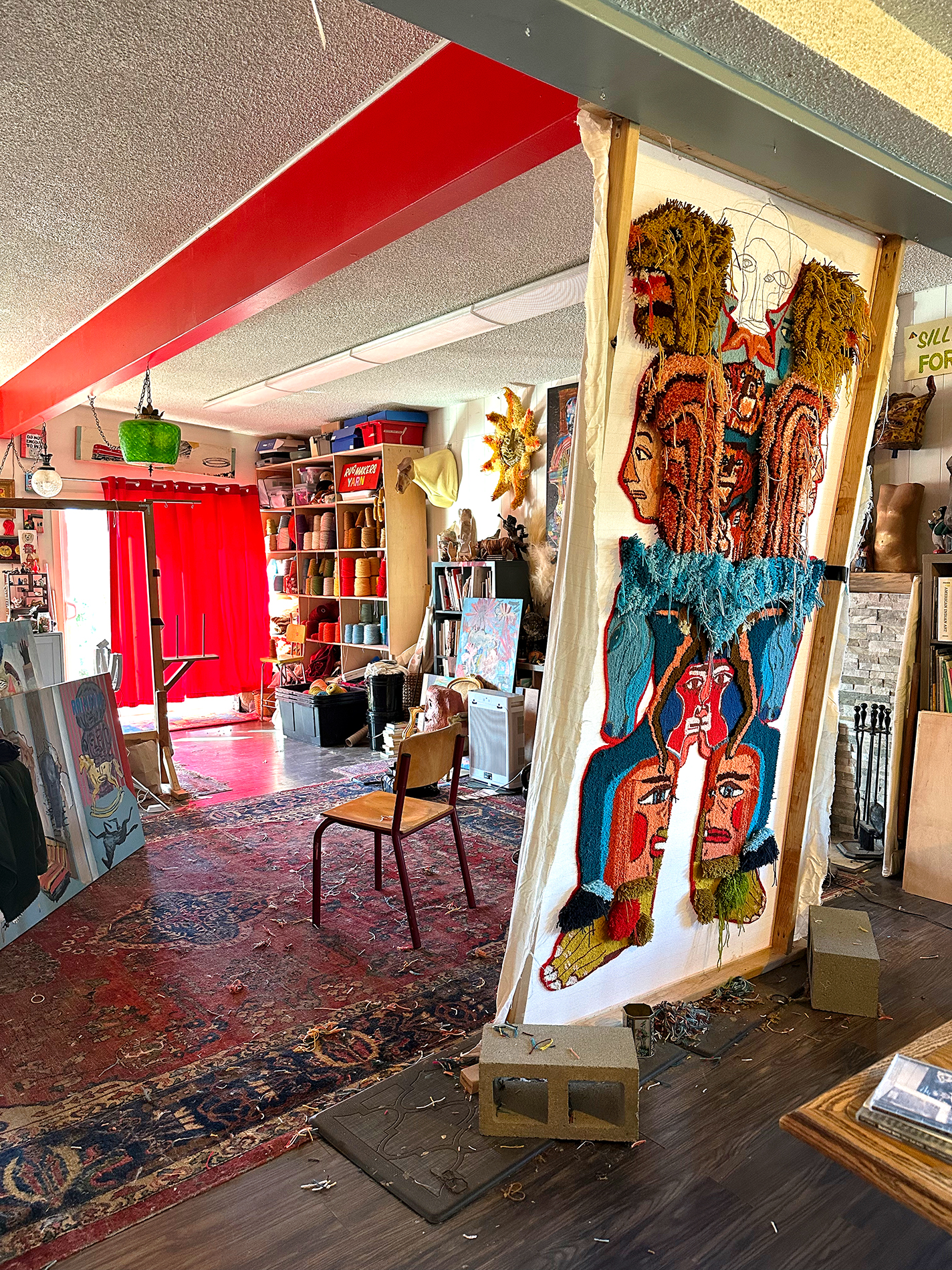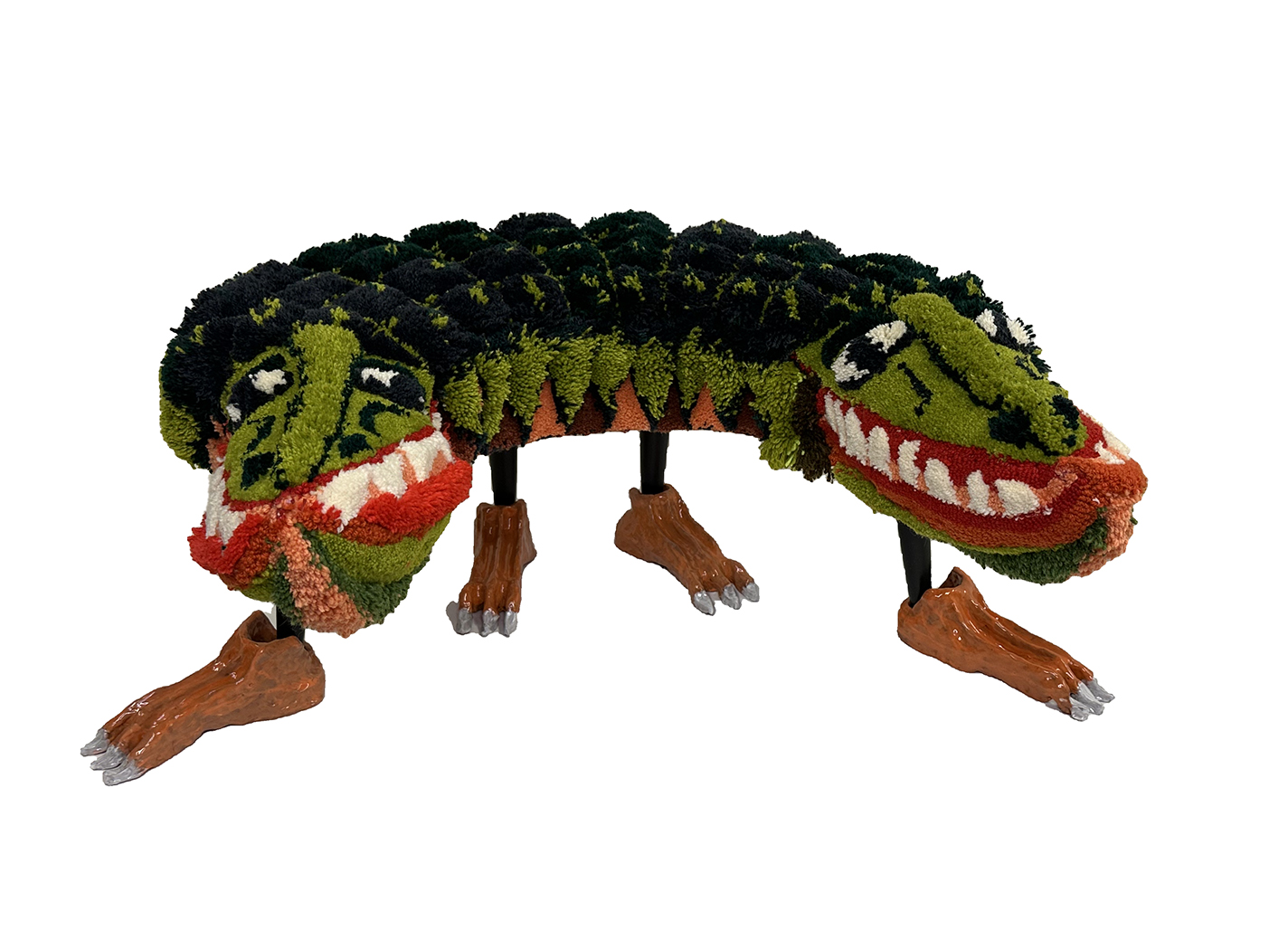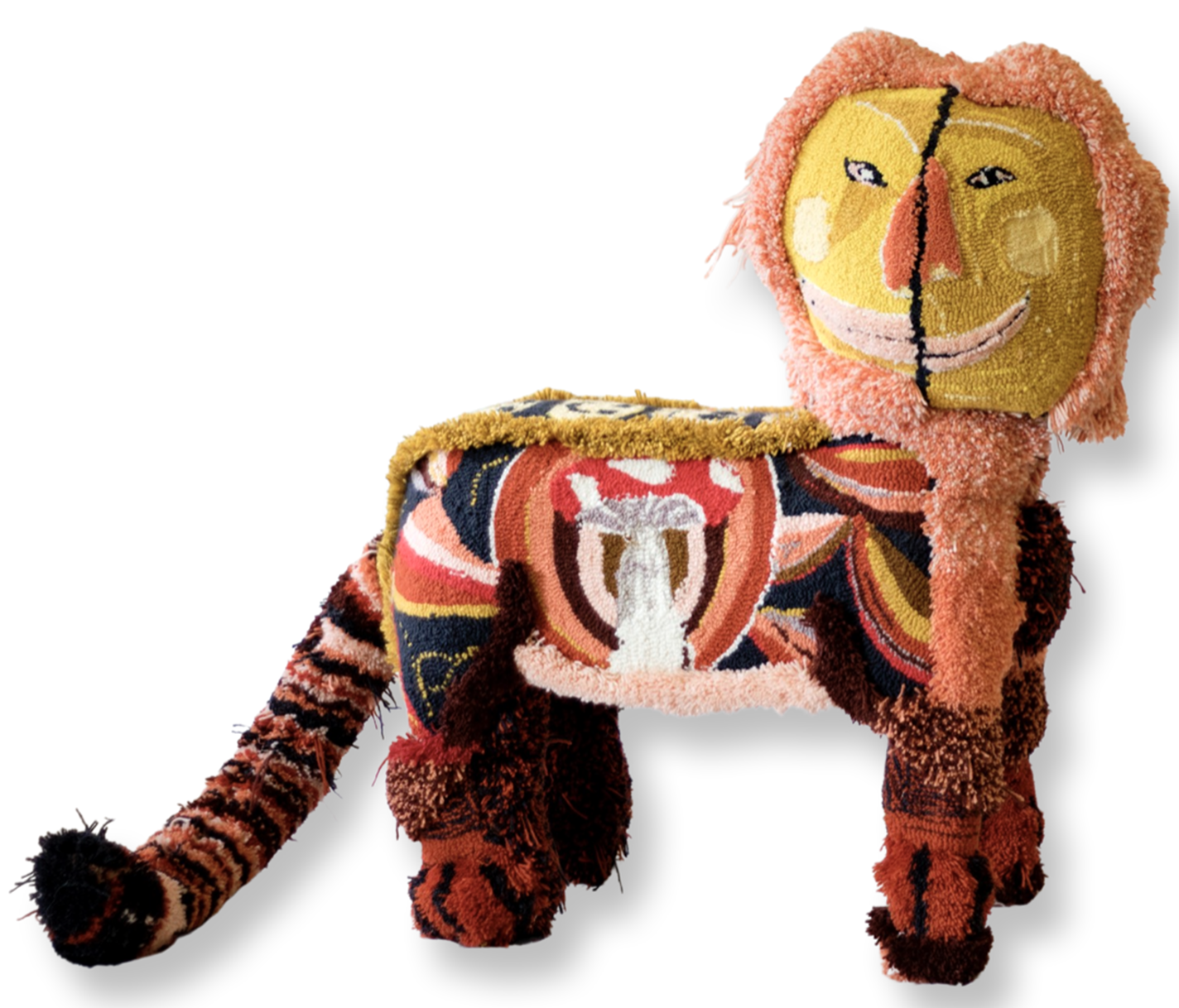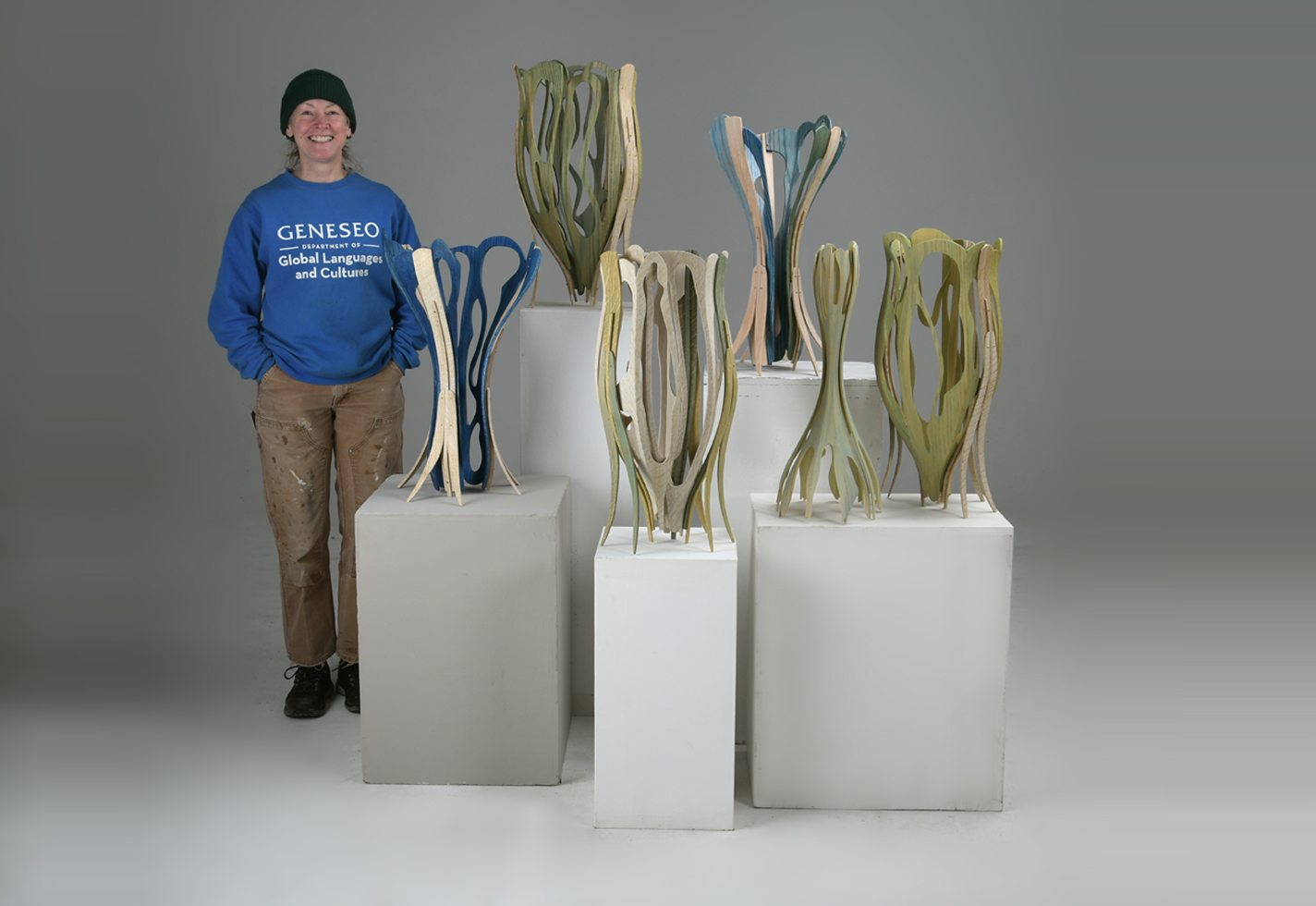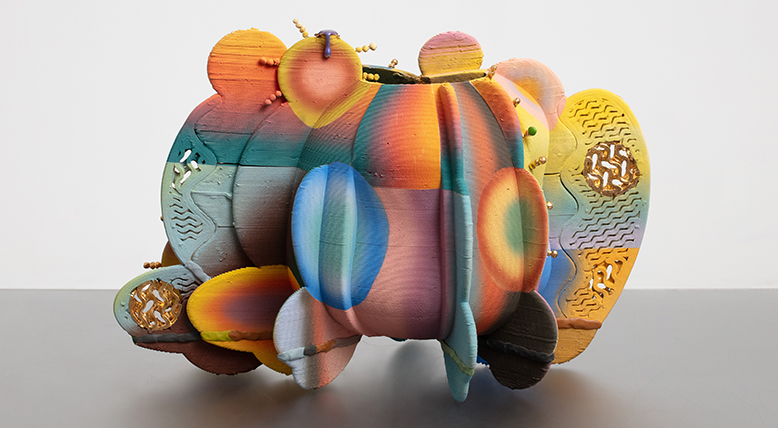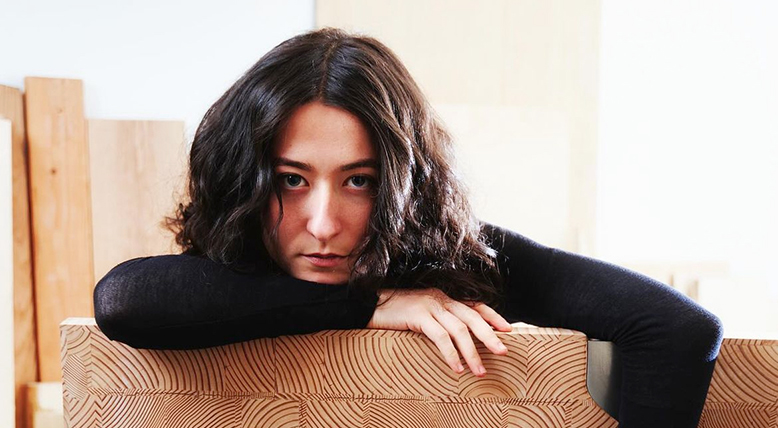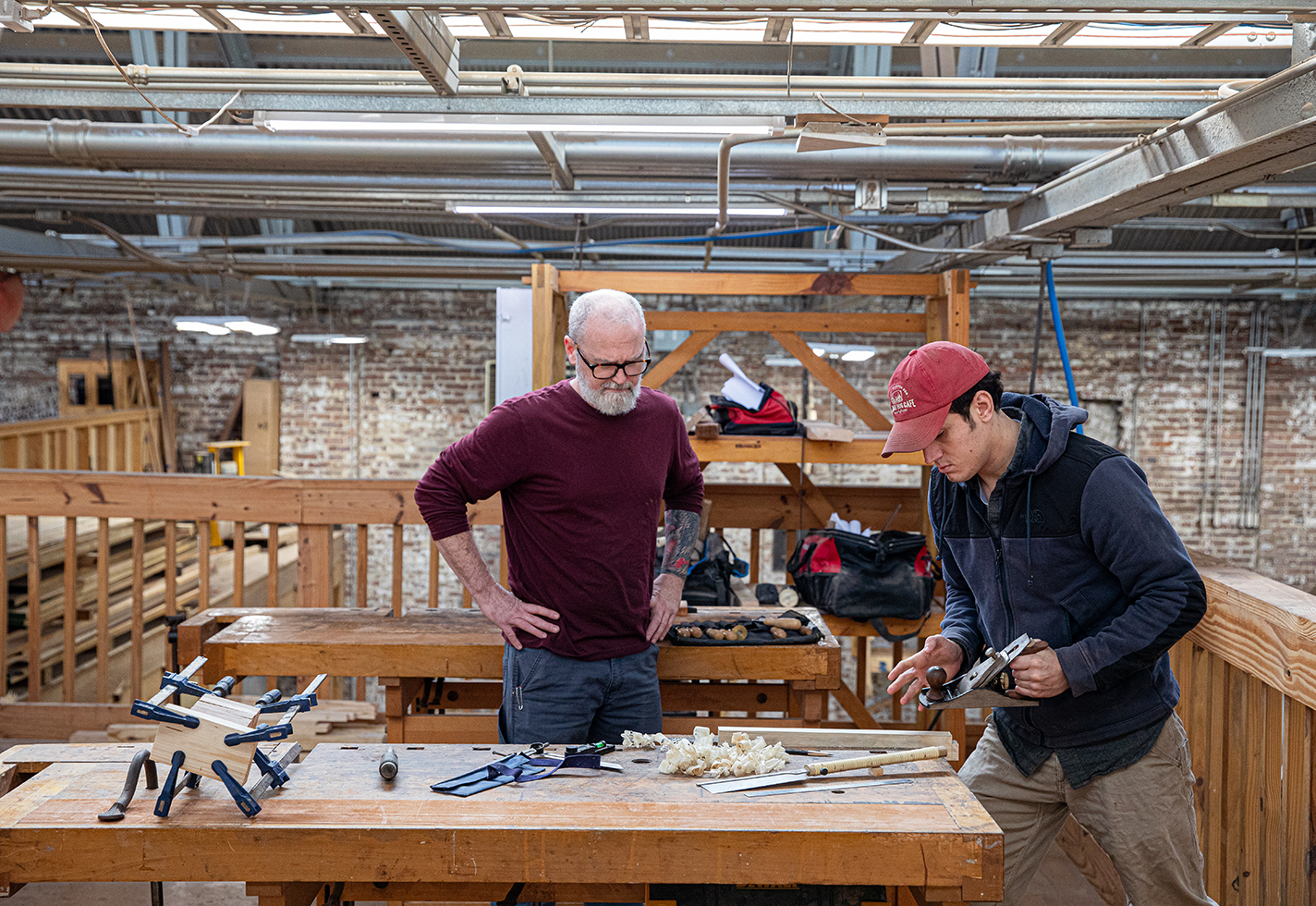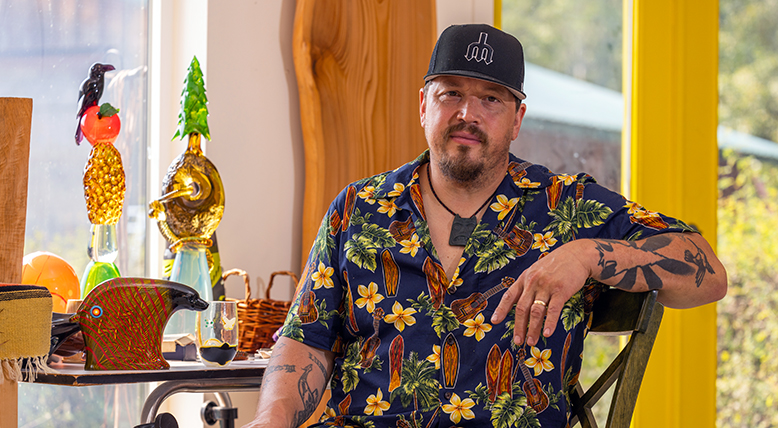What happens when you mix the cozy craft of rug tufting with the wild imagination of a painter? Picture a mid-century lounge chair sprouting patchwork fur, a bench shaped like a two-headed cat, cubed poufs sided with masklike faces, or a tapestry of a grinning tiger in profile on a mossy green background, surrounded by a striped, shaggy border. These are the work of Portland, Oregon–based multimedia artist Melissa Monroe. In her home studio, repurposed from a 1960s church classroom space, Monroe conjures a menagerie of textile creatures and objects that are as likely to sprawl across a floor as to hang on a wall.
Entirely self-taught, Monroe has been a working artist since 2013, mainly painting, though no medium has been off-limits. She also builds furniture-inspired sculptures, dabbles in ceramics, and makes masks from papier mâché, with which she performs at gallery show openings and in videos posted to her vibrant social media pages. In tufting she found a way for these pursuits to coexist. “The idea of it seemed so magical,” she recalls, “like painting with yarn.”
In 2020 an affordable tufting gun hit the market. Before long, cheery rugs and wall hangings in geometric patterns and fluffy emoji-like designs were all over RugTok (TikTok for rugs and tufting, naturally) and Etsy shops galore. But when Monroe spotted a lusciously drippy rainbow stair runner by tufting genius Trish Andersen, she “felt a rush” of inspiration. “I immediately saw all these things that I wanted to do with it that no one else was doing yet.” Monroe had taken an upholstery class and saw a throughline of possibility between tufting and three-dimensional, functional objects.
While the world stood still in pandemic isolation, Monroe’s art exploded into motion. With tufting gun in hand, she began creating vibrant, tactile sculptures that caught the eye of galleries and art fairs across the country. “Tufting very quickly took over my entire art practice,” she recalls. “Galleries wanted to show it, especially 3D objects. I’d started with rugs for people’s spaces, but it evolved into building masks and incorporating furniture-building techniques.”
Monroe shows her work frequently in Portland galleries, Seattle’s AMcE Creative Arts and Lynn Hanson galleries, and the Seattle Art Fair, as well as HeyThere Projects in Joshua Tree, California, and Mortal Machine in New Orleans.
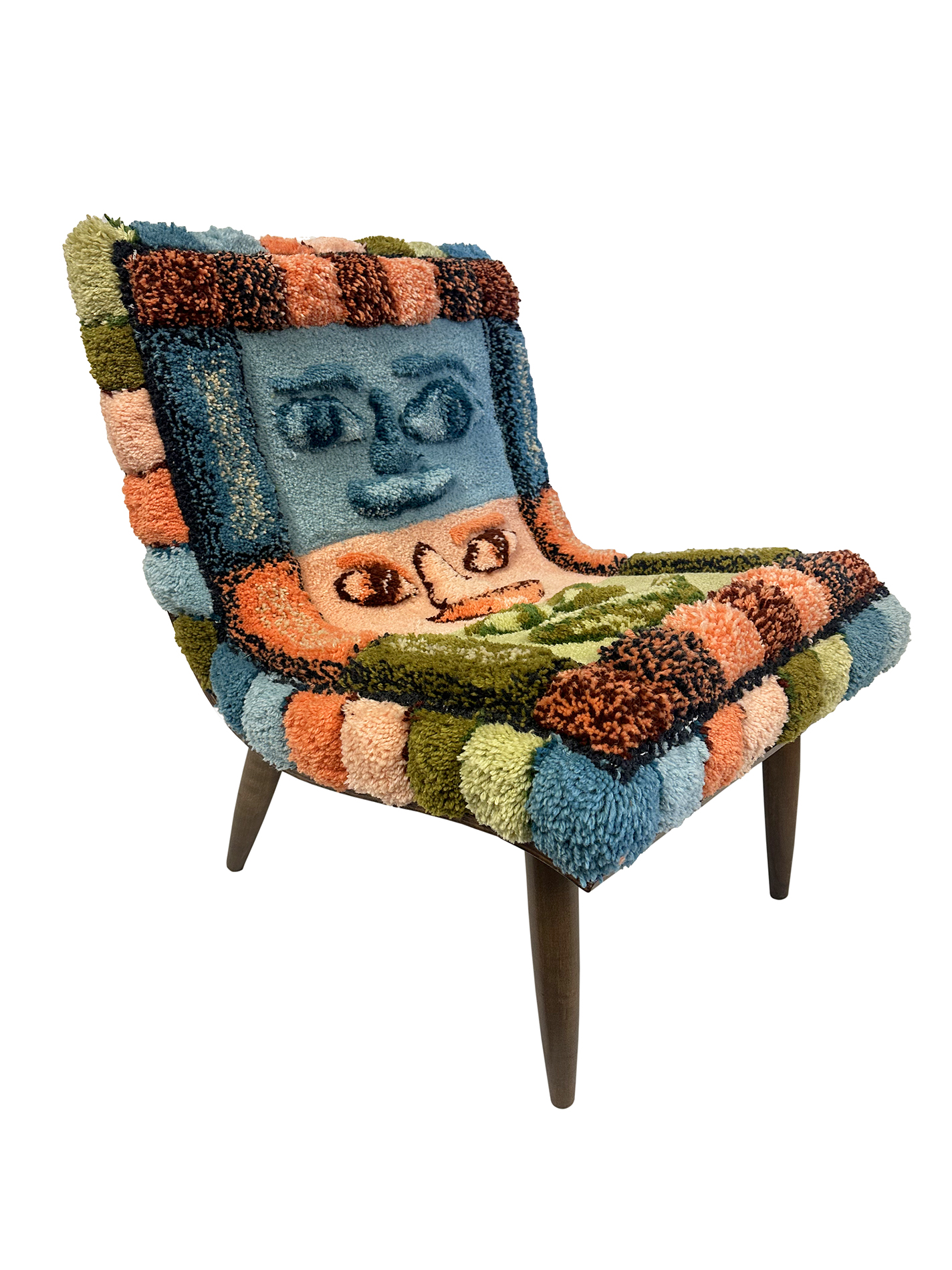
Monroe reupholstered a vintage chair with hand-tufted wool to create Candy Scoop, 2024.
